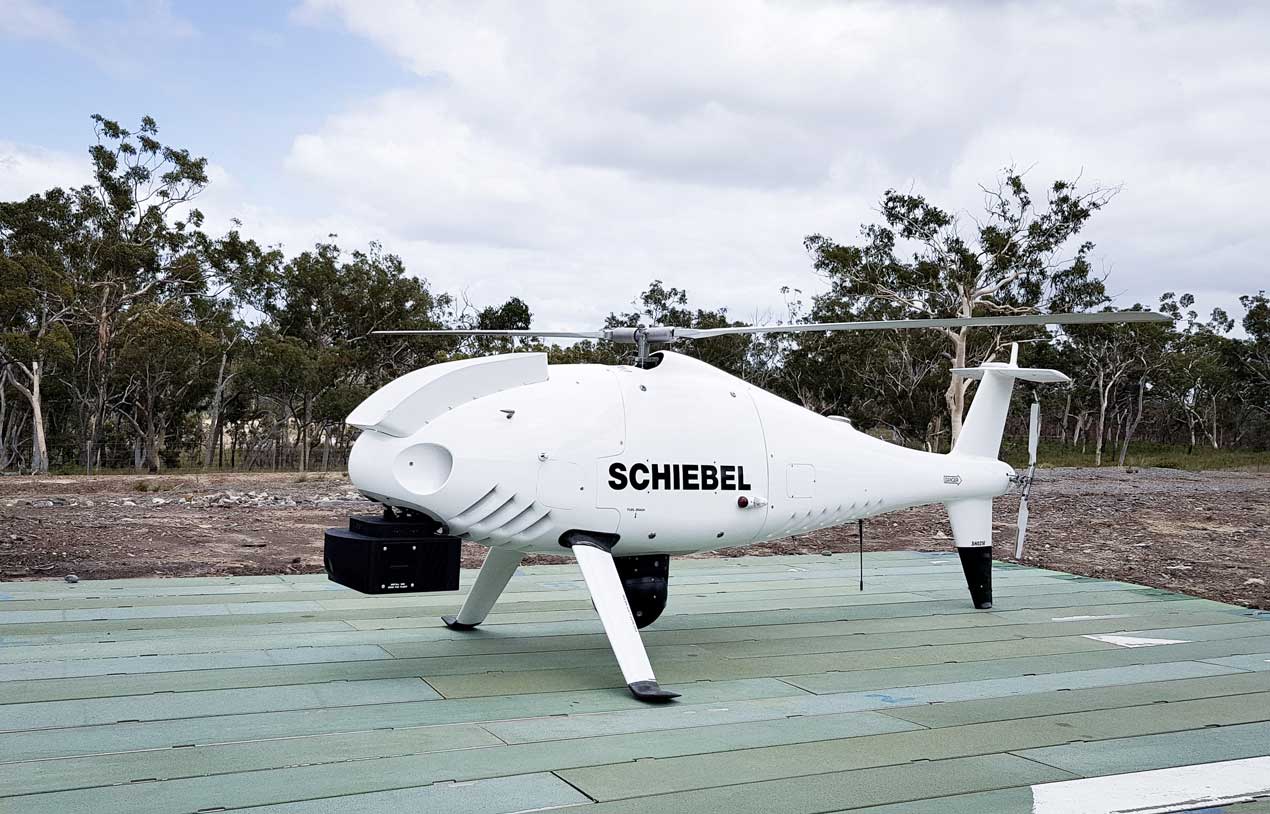Camcopter Participates in Australian Exercise
Two new payloads integrated onto the Schiebel Camcopter S-100.
21 December 2018

The Australian Army is experimenting with land mapping, small object detection and high-frequency (HF) communications intelligence capability on a rotary wing unmanned air system as part of the unmanned tactical air system programme, Project Land 129-3.
Austrian Vertical Takeoff and Landing (VTOL) UAS manufacturer Schiebel, in co-operation with ELTA Systems and Overwatch Imaging, integrated two new payloads for the active army exercise.
The Australian Army conducted a two-week activity with the CAMCOPTER S-100 UAS to gain further insights into future capabilities and payloads in support of Project Land 129-3.
They tested ELTA Systems’ ELK-7065 Compact Airborne HF COMINT/DF 3D System during the first week, followed by Overwatch Imaging’s TK-5 Firewatch during the second week of the exercise.
The multi- payload capable S-100 operates day and night, under adverse weather conditions and with a beyond line-of-sight capability of up to 200 km.
The combination of the CAMCOPTER S-100 and the ELK-7065 offers a remarkably flexible high-frequency (HF) communications intelligence capability that provides rapid spectrum exploration, analysis and detection of advanced HF communication signals in real time and with offline analysis tools. Furthermore, it is suitable to operate in harsh electromagnetic environments.
“The ELK-7065, integrated on the CAMCOPTER S-100 UAS, offers the essential capability of delivering time-critical intelligence in the most complex operational environments,” noted Chris Day, Chief Technical Officer for Schiebel. “This is increasingly important for military, paramilitary and civilian applications.”
Overwatch Imaging’s TK-5 Firewatch payload, which was tested during the second week of the exercise, bridges the gap between small drone mapping cameras and satellite mapping systems. The wide-area multi-band land mapping with automatic small object detection enables regional-scale applications in real time with optimal resolution.
It includes colour, near infrared and temperature-calibrated thermal long-wave infrared (LWIR) sensors that operate at the same time, including simultaneous on-board image processing. Integrated on the CAMCOPTER S-100, it becomes an extremely powerful asset for intelligence, surveillance and reconnaissance (ISR) missions.
Director General of Aviation for the Australian Army, Brigadier John Fenwick, commented that, “The lease of the CAMCOPTER® S-100 and its advanced payloads is an important activity supporting the Army’s understanding of UAS capabilities. We will continue to explore all options to keep the Australian Army at the forefront of new technologies.”